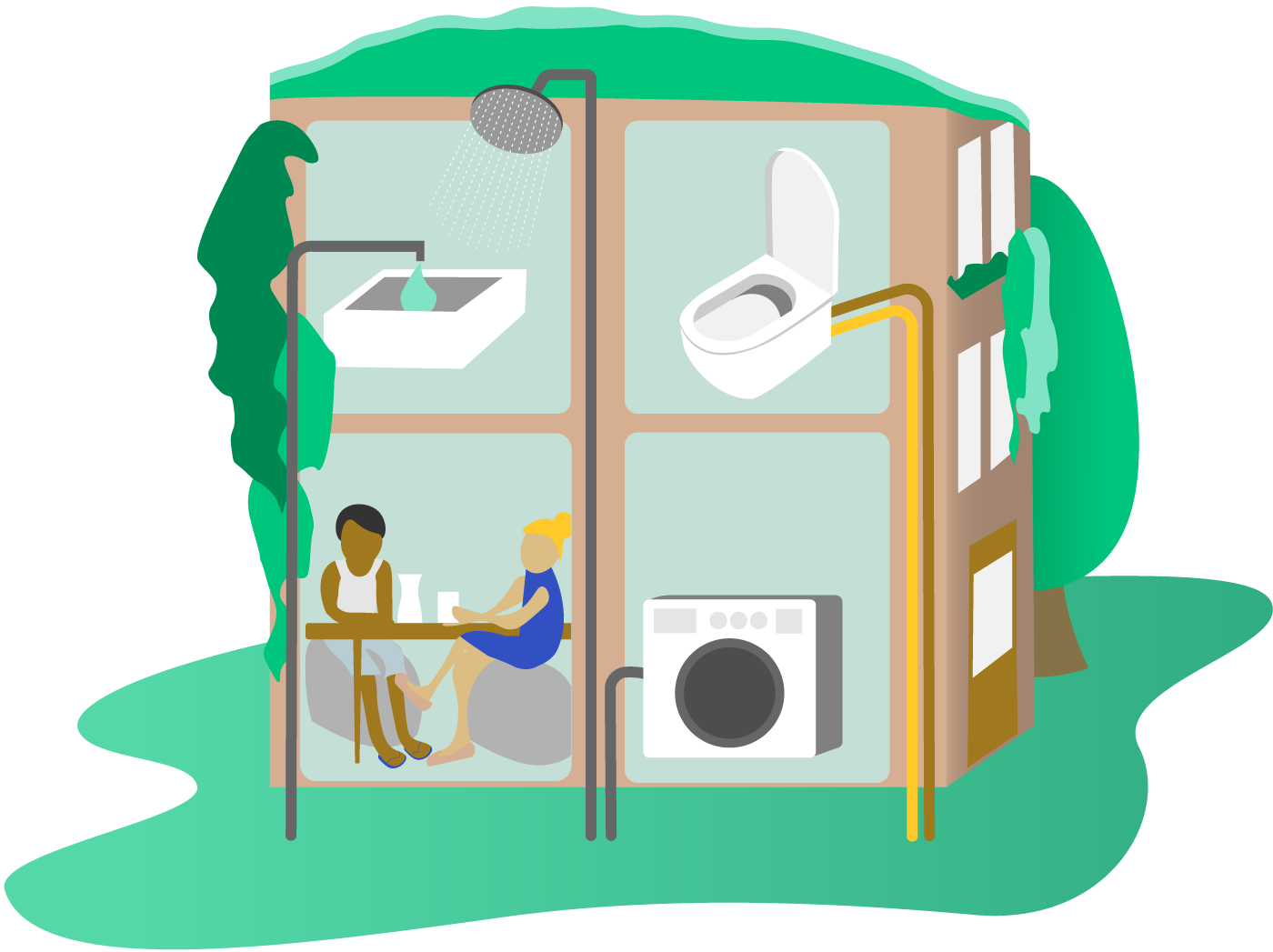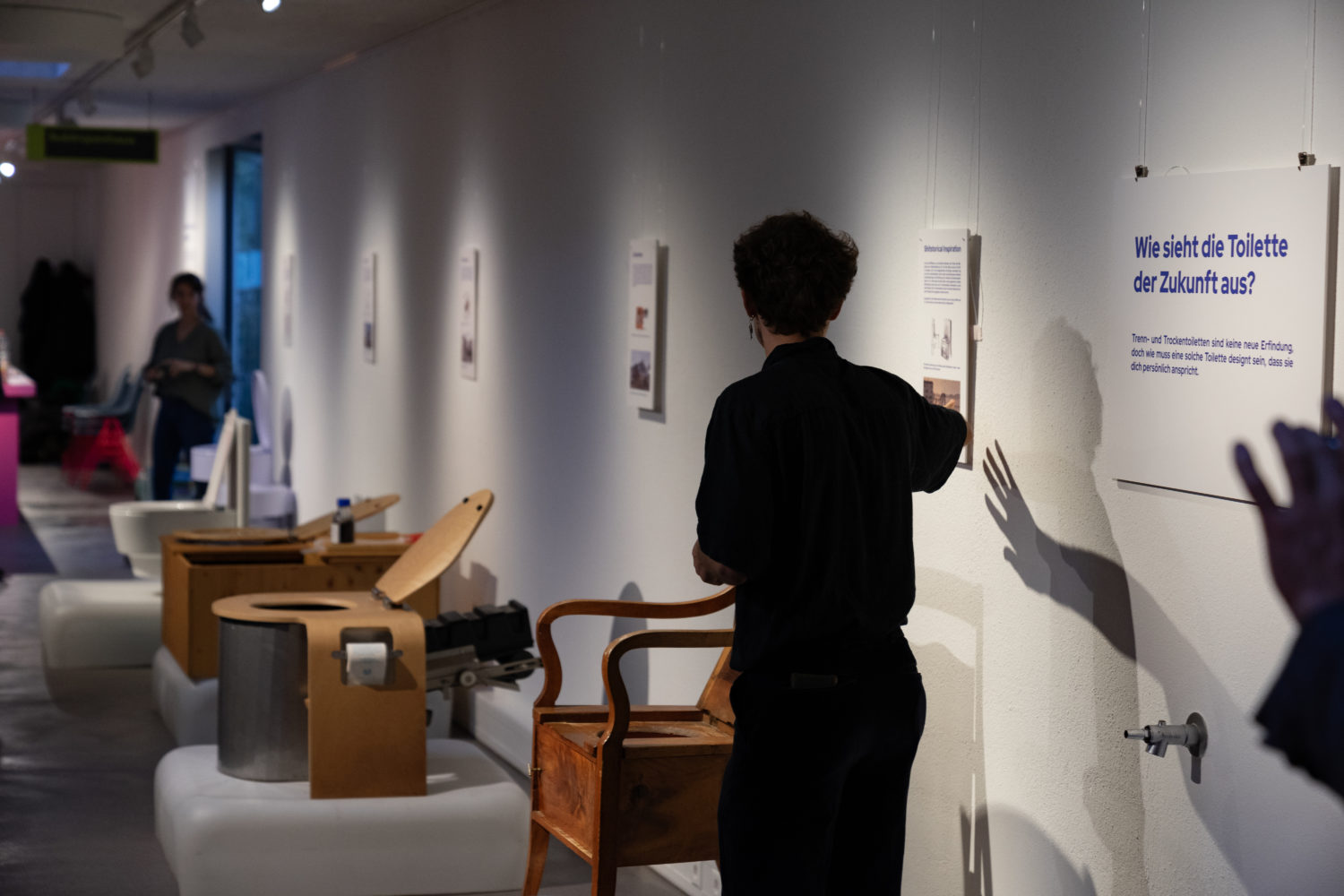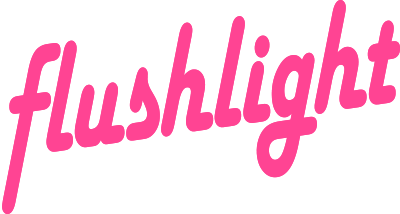Housing & Living

Thirsty households
Only just under a third of the 142 liters of drinking water or fresh water consumed by a Swiss household comes from the taps used to fill glasses, wash plates and wash hands. The rest of the water is used for applications that do not necessarily require drinking water quality. Nevertheless, the water used is often of a higher quality than bottled mineral water. For example, each person uses almost forty liters of drinking water per day to flush the toilet.
Showering, irrigation and laundry are also large positions in our direct water consumption. However, there is also indirect water consumption, i.e. water that is used in the production of clothing, food and other consumer goods. This water is referred to as virtual water. Virtual water consumption exceeds direct consumption many times over and amounts to approximately 4200 liters per person per day. For comparison, the average consumption of drinking water in Congo is about 25 liters per day and 1500 liters virtually. In the USA, the virtual water footprint is around 7500 liters.
Valuable water
Is that a problem? After all, Switzerland is considered the water castle of Europe. But clean water is a limited resource – and it is dwindling: Increased droughts, diminishing permafrost water reservoirs, declining groundwater and nutrient and pollutant contamination of water bodies, as well as the ongoing trend toward urbanization, are a growing threat to freshwater and drinking water supplies in this country as well. Micropollutants, chemical pollution from industrial water, resistant pathogens, and plastic waste are another problem. These pollutions are caused by humans and make water increasingly unusable.
In addition, Switzerland leaves a large part of its water footprint abroad. Products with a high water footprint such as tomatoes, jeans or coffee are mainly imported from countries where water is only available in very limited quantities. As a country at the source, Switzerland is obliged to handle and protect the valuable resource of water in a responsible manner.
In order to protect our water resources, in the future cycles must be closed. Not only to save volumes, but also to prevent pollution from entering the natural water cycle. Sustainable management also involves paying attention to which water resources should be used most efficiently for which uses.
The first step is to use as little drinking water as possible in the household and to mix only a minimal amount with our excreta. Our excreta contains valuable nutrients and should therefore be regarded as resources – they are definitely in the wrong place in the drainage pipe. Separated, the so-called grey water can be recycled with relatively little effort. It can be used as irrigation water for green areas or agriculture or as service water in the household. Typical reuses in the household are toilet flushing and washing machines, or can be used even – with the right quality – for showering and bathing.
Saving water and energy
Contemporary washing machines and dishwashers are already strongly geared to saving water and also only account for a relatively small proportion of consumption. In the case of faucets and shower heads, appropriate attachments save 30 to 50 percent of water. Our behavior also influences our personal water consumption: Showering with an energy-saving shower head, it would take around forty minutes to use the same amount of water as a full bath. However, water also contains a lot of energy. For example, the energy used to heat the hot water for a full bath could charge a smartphone for four years.
Flushing the toilet is responsible for a large amount of the water consumption – however, there are alternatives for this, such as dry or separating toilets. Depending on the model, the amount of water can be reduced significantly or even completely. In addition, such toilets also make it easier to recover nutrients such as phosphorus, potassium and nitrogen from our excreta.
Separation at the source
In order to be able to make optimum use of the potential of the different wastewater streams, these should be kept separate from the outset if possible. Resource-focused treatment (nutrients, energy, water) is easier if the respective portions do not have to be filtered out again from wastewater that has already been mixed. This is why we speak of separation at the source. For these types of wastewater management, new elements and concepts are needed: different, parallel running pipes , more installation space, new designs of toilet bowls , control components. The development of these elements and concepts, as well as their integration into the architecture, is a growing field of innovation.
By using less water overall and then making it directly available again for reuse as graywater through treatment plants at the settlement or building level, it should be possible to reduce the drinking water supply by a good two-thirds.
Text: Laila Lüthi and Tom Stäubli
Editing: Dorothee Spuhler, Gina Marti
References
News about Housing & Living

Event
19.11.2024 |
Stadtgärtnerei
World Toilet day & Finissage

Event
09.11.2024 |
Stadtgärtnerei
Martinimarkt

Event
18.10.2024 |
Lidernenhütte
Alpine Abwasseraufbereitung: Exkursion

Event
21.06.2024 |
Trub

